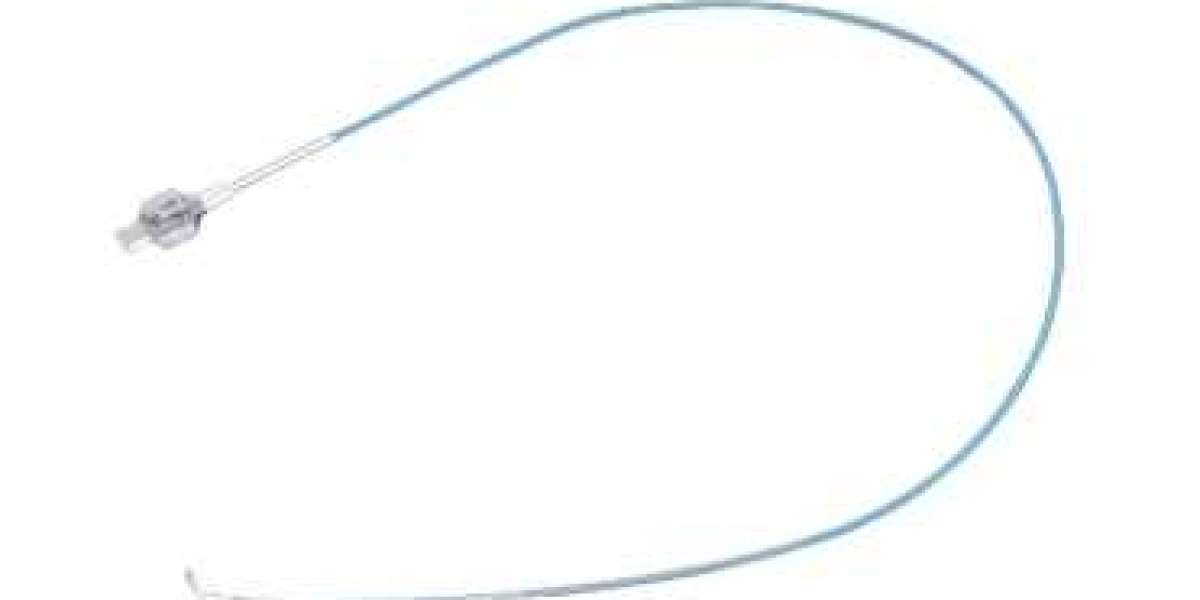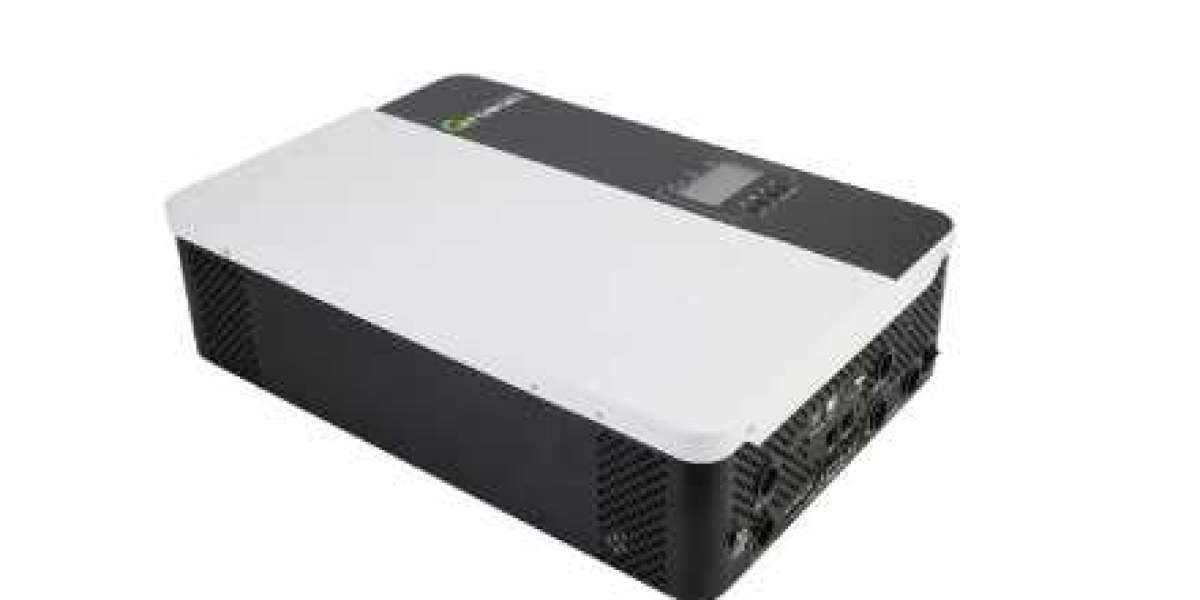In the realm of interventional cardiology, the transradial guiding catheter plays a pivotal role in enhancing patient outcomes during cardiac procedures. This innovative device offers advantages such as reduced bleeding risk, improved comfort for patients, and enhanced procedural success rates. By utilizing the transradial approach with this specialized catheter, healthcare professionals can navigate complex coronary anatomy with precision and efficiency. The ergonomic design and flexibility of the transradial guiding catheter make it a preferred choice for cardiologists worldwide seeking optimal results while ensuring patient safety.
The Transradial Approach in PCI
Minimally Invasive Technique
The transradial approach is a minimally invasive method used for percutaneous coronary interventions (PCI). This technique involves accessing the radial artery in the wrist to perform procedures on the heart. By utilizing this approach, medical professionals can perform necessary cardiac interventions with less trauma to the body.
Using a transradial guiding catheter, physicians can navigate through blood vessels to reach the heart's arteries without needing to enter through larger arteries or veins. This results in reduced discomfort and quicker recovery times for patients undergoing PCI procedures.
Reduced Risk of Complications
Compared to using the femoral artery access point, which requires entry through the groin area, transradial PCI significantly reduces the risk of bleeding and vascular complications. The radial artery is more superficial than other major arteries, making it easier to compress after catheterization, decreasing potential bleeding issues post-procedure.
Pros:
Lower risk of bleeding and vascular complications
Improved patient comfort during and after procedures
Cons:
Steeper learning curve for medical professionals transitioning from femoral access
May not be suitable for all types of coronary interventions
Enhanced Patient Experience
Studies have shown that patients who undergo transradial PCI report higher levels of comfort and satisfaction compared to those who receive care via traditional femoral access. Being able to sit up immediately after a procedure instead of lying flat as required with femoral access contributes significantly to patient comfort levels.
Patients also benefit from faster ambulation post-procedure due to decreased likelihood of complications such as hematoma formation at the access site.
Guide Catheter Selection for Transradial PCI
Importance of Proper Selection
Selecting the appropriate transradial guiding catheter is vital for successful transradial PCI. The catheter's shape and size play a crucial role in ensuring optimal engagement and support during the procedure.
Proper guide catheter selection can significantly enhance procedural efficiency by providing better access to the target vessel, leading to improved outcomes and reduced complications.
Ensures optimal engagement
Provides necessary support
Enhances procedural efficiency
Factors to Consider
When choosing a transradial guiding catheter, several factors need consideration, such as the patient's anatomy, lesion characteristics, and operator preferences.
It is essential to select a guide catheter with an appropriate curve that matches the patient's radial artery anatomy to ensure smooth navigation through tortuous vessels. Considering lesion complexity helps determine whether additional backup support may be required during the procedure.
Patient's anatomy influences choice
Lesion characteristics impact selection
Operator preferences play a role
Considering these factors helps interventional cardiologists choose the most suitable guide catheter for each specific case, optimizing procedural success while minimizing potential risks.
Different Designs of Guiding Catheters
Various Designs
Guiding catheters, such as the transradial guiding catheter, are available in different designs like straight, multipurpose, and Judkins left/right configurations. Each design serves a unique purpose based on the specific anatomical variations encountered during procedures. For instance, a straight guiding catheter is suitable for simpler coronary anatomy cases where precise navigation is not as critical.
These guide catheters offer versatility in navigating complex coronary structures with precision and efficiency. Physicians can choose from various types of guide catheters to suit the specific needs of each patient's case. The ability to select a single catheter design that aligns with the anatomical requirements allows for more tailored treatment approaches.
Advantages and Precision
The diverse range of guiding catheter designs provides physicians with options to tackle challenging cases effectively. Multipurpose guide catheters are versatile tools that can adapt to different anatomies, offering flexibility during procedures. In contrast, Judkins left/right configurations cater specifically to certain angles within the coronary anatomy.
Straight guiding catheters: Suitable for simple coronary anatomy.
Multipurpose guide catheters: Versatile tools adaptable to various anatomies.
Judkins left/right configurations: Ideal for specific angles within coronary anatomy.
Physicians rely on these varied type of guide catheters to navigate through intricate blood vessels accurately and safely during transradial interventions.
Choosing the Appropriate Size and Guide
Factors Influencing Guide Catheter Size Selection
Choosing the right transradial guiding catheter size is crucial for successful procedures. Operators consider various factors like vessel diameter, lesion complexity, and personal preference when selecting a guide catheter size. By matching the guide catheter size to the vessel diameter, operators ensure adequate backup support during interventions.
Operators must also assess lesion complexity since more challenging lesions may require larger guide catheters to provide sufficient support. Personal preference plays a role as well; some operators may have experience with specific sizes that they find easier to handle during procedures.
Proper sizing of the guiding catheter is essential for achieving optimal procedural outcomes and minimizing complications. A well-fitted guide reduces the risk of dissections or spasm in vessels, improving overall procedural success rates while ensuring patient safety.
Benefits of Optimal Guide Catheter Sizing
Adequate backup force
Reduced risk of complications
Selecting an appropriate guide catheter size ensures that operators can deliver interventional devices effectively with enough support from the guiding system. This helps maintain precise control over device placement within blood vessels, leading to successful treatment outcomes.
Optimal sizing also minimizes risks such as vessel trauma or perforation due to improper fit, enhancing patient safety throughout interventional procedures.
Advantages of Sheathless Guide Catheters
Elimination of Additional Introducer Sheath
Sheathless guide catheters, like the transradial guiding catheter, remove the need for an extra introducer sheath during transradial PCI. This simplifies the procedure by reducing the number of components required, making it more streamlined and efficient. Without the additional sheath, there is less equipment to manage, which can lead to smoother operations in the cardiac cath lab.
Using a sheathless design eliminates potential complications associated with introducing and maneuvering an extra sheath within the radial artery. This reduction in manipulations decreases trauma to the radial artery, minimizing injury risk and enhancing patient safety during procedures. By avoiding unnecessary steps involved in inserting an introducer sheath, healthcare providers can perform interventions more quickly and with greater precision.
Improved Procedural Efficiency
The sheathless guide catheter not only reduces radial artery trauma but also enhances procedural efficiency by streamlining workflow processes in interventional cardiology settings. With fewer components to handle and manipulate, medical professionals can focus more on performing successful interventions rather than managing various tools needed for each procedure. This efficiency translates into potentially shorter procedure times due to simplified setup requirements.
In addition to improving procedural efficiency, using a sheathless guide catheter may lead to better resource utilization within healthcare facilities. By eliminating the need for additional equipment such as introducer sheaths, hospitals can optimize their inventory management practices and reduce costs associated with stocking multiple types of guiding catheters.
HEARTRAILIII Guiding Catheter Design
Hybrid Design
The transradial guiding catheter, known as the HEARTRAILIII, boasts a distinctive hybrid design. This design cleverly merges the strengths of multipurpose and Judkins catheters into one. The fusion results in a versatile tool that excels in various aspects crucial for successful procedures.
The hybrid nature of the HEARTRAILIII guiding catheter offers significant benefits during interventions. By combining features from both multipurpose and Judkins catheters, it provides superior engagement with the coronary anatomy. This enhanced engagement translates to better support and maneuverability, especially when navigating through complex arterial structures.
Clinical Outcomes
One of the most compelling aspects of the HEARTRAILIII guiding catheter is its track record of exceptional clinical outcomes during transradial percutaneous coronary intervention (PCI) procedures. Healthcare professionals have reported positive results when utilizing this innovative tool in practice.
Enhanced engagement with coronary anatomy
Improved support and maneuverability
Superior clinical outcomes in transradial PCI procedures
Physics Behind Guiding Catheters for Coronary Interventions
Hydrophilic Coatings
Guiding catheters are designed with hydrophilic coatings to reduce friction and improve their ability to navigate through blood vessels. These coatings make the catheter surface slippery, allowing it to move smoothly within the vasculature. As a result, healthcare providers can easily maneuver the catheter during coronary interventions, enhancing precision and reducing the risk of damaging blood vessel walls.
Guiding catheters with hydrophilic coatings offer several advantages:
Reduced friction for smoother navigation
Enhanced trackability in blood vessels
Improved procedural success rates due to increased precision
Radiopaque Markers
Radiopaque markers play a crucial role in guiding catheters by providing visibility under fluoroscopy during coronary interventions. These markers are visible on X-ray images, allowing healthcare providers to accurately track the position of the catheter within the blood vessels. By visualizing these markers on fluoroscopic screens, medical professionals can ensure proper placement of the guiding catheter, leading to more effective treatment outcomes for patients undergoing coronary procedures.
The presence of radiopaque markers on guiding catheters offers significant benefits:
Enhanced visualization during coronary interventions
Accurate positioning within blood vessels
Improved procedural efficiency and success rates
Universal Guiding Catheters for Transradial Approach
Versatile Solution
Universal guiding catheters are essential tools in transradial percutaneous coronary intervention (PCI) due to their ability to adapt to different vessel sizes and shapes. These catheters, designed for the radial approach, provide operators with the flexibility needed to navigate complex coronary anatomy. By accommodating various anatomical variations encountered during procedures, universal guiding catheters ensure smoother navigation through challenging pathways.
Operators benefit from improved torque control when using universal guiding catheters during transradial interventions. The enhanced torque control allows for precise manipulation of the catheter tip within the vessels, aiding in reaching specific target areas accurately. This feature is particularly crucial when dealing with intricate lesions or tortuous vessels that require delicate handling. The ability to control the angle (angle theta) of entry into the vessel contributes significantly to successful outcomes in PCI procedures.
Offers flexibility and adaptability
Enhanced torque control for precision
Advantages Over Traditional Catheters
Compared to traditional guiding catheters, universal guiding catheters offer distinct advantages in transradial interventions. Their versatility allows operators to perform a wide range of procedures without needing multiple specialized catheters for different anatomies. This not only streamlines the procedural setup but also reduces costs associated with stocking various types of catheters.
Universal guiding catheters minimize trauma to patients by reducing insertion attempts and overall procedure time. Operators can achieve better outcomes with fewer complications by utilizing these versatile tools specifically designed for transradial access. The ease of use and adaptability make them a preferred choice among interventional cardiologists performing PCI via radial access.
Cost-effective solution
Reduced patient trauma and procedure time
Case Series and Clinical Outcomes
Favorable Outcomes
Case series studies on transradial guiding catheters have revealed positive clinical outcomes. These studies demonstrate improved success rates during procedures, reduced complications, and increased patient satisfaction. For instance, international case series data highlighted a significant decrease in contrast volume usage with specific guide catheter designs.
These findings underscore the significance of selecting appropriate guide catheters for transradial interventions. By using specialized guiding catheters tailored for transradial PCI, healthcare providers can enhance procedural success rates and minimize potential complications. Patients undergoing these procedures benefit from better outcomes and overall satisfaction due to the optimized approach facilitated by these guiding catheters.
Importance of Guide Catheter Selection
The analysis of various cases has consistently shown that the choice of guide catheter significantly impacts procedural success in transradial interventions. Studies comparing different guide catheter designs have reported varying levels of technical success based on the selected equipment. Opting for suitable guiding catheters can lead to smoother procedures, lower complication rates, and enhanced overall patient experience.
Improved procedural success rates
Reduced complications
Enhanced patient satisfaction
Closing Thoughts
The exploration of transradial guiding catheters in percutaneous coronary interventions has revealed crucial insights into guide catheter selection, design considerations, and clinical outcomes. Understanding the nuances of choosing the appropriate size, sheathless options, and universal designs can significantly impact procedural success and patient safety. The advancements in guiding catheter technology, exemplified by the HEARTRAILIII design, underscore the continuous evolution within interventional cardiology.
As the field progresses, practitioners are encouraged to stay abreast of emerging trends and evidence-based practices to enhance procedural efficiency and patient care. Embracing the principles of precision medicine and tailored approaches to guide catheter selection can pave the way for improved outcomes in transradial interventions. Stay informed, engage with colleagues, and strive for excellence in utilizing guiding catheters to elevate standards of care in coronary interventions.
Frequently Asked Questions
What is the significance of using transradial guiding catheters in PCI?
Transradial guiding catheters offer improved patient comfort, reduced bleeding risk, and enhanced procedural outcomes compared to traditional femoral access. They allow for better maneuverability during coronary interventions.
How do physicians select the appropriate size and type of guide catheter for transradial PCI?
Physicians consider factors such as vessel anatomy, lesion complexity, and operator preference when selecting guide catheters. The choice involves balancing support needs with the desire for minimal trauma to the radial artery.
What are the advantages of sheathless guide catheters in transradial interventions?
Sheathless guide catheters eliminate an additional layer between the diagnostic/therapeutic devices and the target vessel, providing better torque transmission and reducing friction. This design also enhances device compatibility during complex procedures.
Can universal guiding catheters be used effectively in a transradial approach?
Universal guiding catheters offer versatility by accommodating various clinical scenarios but may lack optimal support or shape retention compared to dedicated designs. Their utility depends on individual procedural requirements and operator experience.
How does HEARTRAILIII guiding catheter design contribute to improving coronary interventions?
The HEARTRAILIII design incorporates features like hydrophilic coating, radiopacity markers, and optimized shaft stiffness to enhance trackability, visibility under fluoroscopy, pushability through tortuous anatomy, ultimately aiding in successful navigation during PCI procedures.








